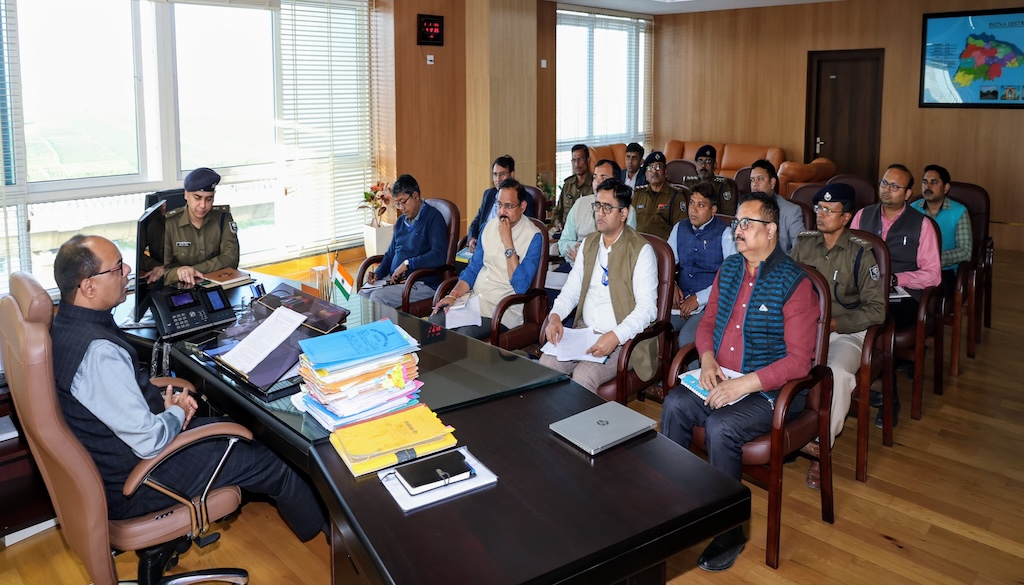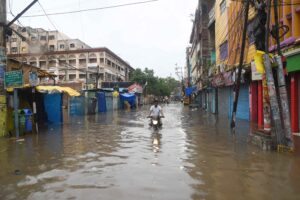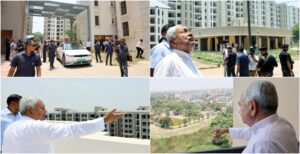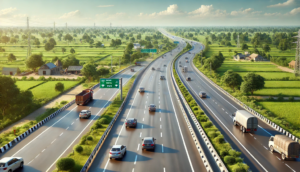Patna District Magistrate Reviews Traffic, Encroachment, and Urban Development Plans

Patna: Patna District Magistrate Dr Chandrashekhar Singh held a review meeting on Thursday to discuss traffic management, encroachment removal, civic amenities, and urban beautification. The meeting focused on short-term and long-term strategies for the city’s multifaceted development, with an emphasis on public interest and local needs.
Addressing officials, Dr Singh highlighted Patna’s rapid infrastructure expansion, including roads, bridges, and flyovers, alongside the ongoing metro construction. He noted that government initiatives had significantly improved public life.
Encroachment Removal and Beautification
Dr Singh instructed officials to enforce encroachment removal from Digha to Kangan Ghat, stating that claims on unsurveyed land along the Ganges were invalid. He cited Supreme Court and National Green Tribunal orders prohibiting construction in these areas and called for strict enforcement. The Forest Department will install fencing, while other departments will undertake tree plantation and beautification projects.
Authorities were directed to curb unauthorized vending along JP Gangapath, particularly from LCT Ghat to the Collectorate, with punitive measures against violators. He confirmed that Patna Smart City Limited is developing a riverfront project, including parking, green belts, walking pathways, and designated vending zones along the JP Gangapath corridor.
Under the plan, a 100-metre radius around Digha Rotary will be a no-vending zone. Beyond this, a 1.2-kilometre vending zone up to Kurji Ghat is being developed, with designated parking on both sides. The southern stretch from the Divisional Commissioner’s office to Digha will remain a green belt.
Fly Ash and Road Safety Concerns
Dr Singh addressed the issue of fly ash accumulation along the Zero Mile–Toll Plaza–Deedar Ganj bypass, which has caused significant inconvenience. He ordered officials to coordinate with NTPC to regulate fly ash transportation and ensure compliance with safety standards. The National Highways Authority of India was instructed to repair potholes and clear dust from roads.
Traffic regulations on Ashoka Rajpath will be tightened, with a crackdown on illegal parking, vending, and wrong-side driving. Officials were asked to maintain communication with vendors and other stakeholders.
Strengthening Traffic and Surveillance Systems
The administration aims to enhance traffic, transportation, and parking facilities for public convenience. A three-member committee—comprising the Superintendent of Police (Traffic), Sub-Divisional Officers, and the Additional District Magistrate (Law and Order)—is actively monitoring urban areas in coordination with municipal authorities.
Dr Singh stressed the importance of an advanced traffic management system for Patna, a key transit hub for eastern and northeastern India. He underscored the need for technological interventions such as digital signboards, public address systems, vehicle speed detection, and automated number plate recognition to ensure public safety.
Patna Smart City Limited has installed over 3,300 CCTV cameras at 415 locations across the city. The city is also implementing an Intelligent Traffic Management System featuring adaptive traffic control, variable message boards, emergency call boxes, and environmental sensors.
Dr Singh reiterated that urban development must prioritise public safety, economic growth, and quality of life. He called for a collective effort to create a sustainable and well-managed city.






